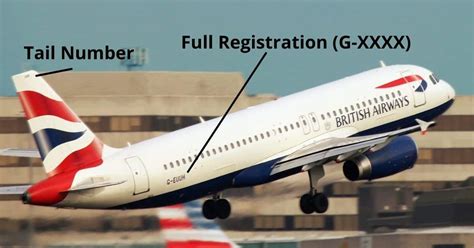PlaneView Serial Number Changes: Proven Strategies for Accurate Tracking and Management
PlaneView, a powerful flight tracking and data management system, relies heavily on accurate serial numbers for identifying and managing aircraft. Changes to these serial numbers, whether due to repairs, modifications, or data entry errors, can create significant challenges in maintaining data integrity and operational efficiency. This article explores proven strategies for effectively managing and tracking PlaneView serial number changes, minimizing disruptions, and ensuring the accuracy of your flight data.
Why are PlaneView Serial Number Changes Important?
Maintaining accurate serial numbers in PlaneView is crucial for several reasons:
- Data Integrity: Inconsistent or incorrect serial numbers lead to fragmented data, making it difficult to track maintenance history, flight logs, and other critical aircraft information. This can impact safety and regulatory compliance.
- Operational Efficiency: Accurate serial numbers streamline various processes, including maintenance scheduling, parts ordering, and fleet management. Errors can lead to delays and increased operational costs.
- Regulatory Compliance: Many aviation regulations require meticulous record-keeping, including accurate tracking of aircraft components and their serial numbers. Errors can result in non-compliance and potential penalties.
- Troubleshooting and Maintenance: Knowing the exact serial number of a component is critical for efficient troubleshooting and repairs. Incorrect information can lead to delays and unnecessary expenses.
Common Causes of PlaneView Serial Number Changes
Understanding the root causes of serial number changes is the first step towards effective management. Common reasons include:
- Component Replacements: During maintenance, parts with different serial numbers replace damaged or worn-out components.
- Data Entry Errors: Manual data entry can introduce errors, leading to discrepancies between the actual serial number and the one recorded in PlaneView.
- Modifications and Upgrades: Significant modifications or upgrades might involve replacing components or altering existing ones, resulting in new serial numbers.
- System Migrations or Updates: During system transitions, data migration processes can sometimes introduce errors or inconsistencies in serial numbers.
Proven Strategies for Managing PlaneView Serial Number Changes
Implementing robust strategies for managing serial number changes is critical for maintaining data accuracy and operational efficiency. Here are some proven approaches:
1. Implementing a Standardized Serial Number Tracking System:
Establish a clear and consistent procedure for documenting all serial number changes. This could involve using a dedicated logbook, spreadsheet, or a more sophisticated database system integrated with PlaneView. Ensure that all personnel involved in maintenance and data entry are trained on the correct procedures.
2. Utilizing Barcodes and QR Codes:
Integrating barcodes or QR codes onto aircraft components makes it easier to scan and record serial numbers accurately, minimizing manual data entry errors. This technology helps automate the data entry process and reduces the likelihood of human error.
3. Implementing Double-Checking and Verification Procedures:
Introduce a system of double-checking and verification for all serial number entries. This could involve having two individuals independently verify the accuracy of the information before it's entered into PlaneView. This helps catch errors before they propagate throughout the system.
4. Regular Data Audits and Reconciliation:
Conduct regular audits of PlaneView data to identify and correct any discrepancies in serial numbers. Compare the data in PlaneView with physical records and maintenance logs to ensure consistency. This proactive approach helps prevent small errors from accumulating into larger problems.
5. Utilizing PlaneView's Data Validation Features:
Leverage any built-in data validation features within PlaneView to prevent incorrect serial numbers from being entered into the system. These features can identify inconsistencies or potential errors, alerting users to potential problems before they are committed.
6. Training Personnel on Proper Procedures:
Providing thorough training to all personnel involved in managing aircraft data is essential. This ensures that everyone understands the importance of accurate serial number recording and the procedures for handling changes.
Addressing Specific Challenges: People Also Ask
Here we address some frequently asked questions related to PlaneView serial number changes:
How do I correct a serial number error in PlaneView?
Correcting a serial number error requires careful documentation and adherence to the established change management process. Depending on the system's configuration, there may be specific procedures for modifying existing records. Consult the PlaneView user manual or support documentation for detailed instructions. Always document the correction, including the date, reason for the change, and the individuals involved.
What happens if I have multiple conflicting serial numbers for the same component?
Conflicting serial numbers indicate a serious data integrity problem. A thorough investigation is needed to determine the source of the conflict. This might involve reviewing maintenance logs, comparing physical labels, and potentially consulting with the component manufacturer. Once the correct serial number is identified, all conflicting entries should be corrected and documented.
How can I prevent future serial number errors in PlaneView?
Proactive measures are key to preventing future errors. Implement the strategies discussed above, such as standardized tracking systems, barcode/QR code integration, double-checking, and regular data audits. Training and consistent adherence to established procedures are crucial.
By implementing these strategies, you can effectively manage PlaneView serial number changes, ensuring the accuracy, integrity, and reliability of your flight data. This contributes to safer operations, improved efficiency, and regulatory compliance. Remember, proactive management is always more effective and cost-efficient than reacting to problems later.

